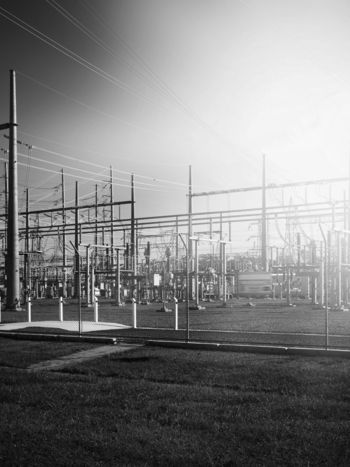Time in Communication Networks, Protection and Control Applications – Time Sources and Distribution Methods
In conventional protection and automation control systems (PACS), a common time reference is used to identify the sequence of events. This helps operators and engineers to analyze and understand the system events. In recent years, with the adoption of IEC 61850-based PACS, a high accuracy common time reference is required for aligning digitized measurements from instrument transformers. Wide area control and monitoring applications based on IEEE C37.118 synchrophasor also require a high accuracy time synchronization to participating phasor measurement units (PMUs). Traveling wave-based applications such as fault location detection and time-domain protection demands a time synchronization accuracy of better than 1 microsecond. The recent development of many applications based on the industrial internet of things (IIOT) infrastructure in the power sector also requires time-synchronized sensor data. Many applications such as automated control, system stability analysis, and prediction, use time-synchronized sensor data. In power communication networks, a synchronized frequency is needed to ensure correct transmission.
Members
Convenor
(CN)
Y. YUAN
Co-Convenor
(CN)
Q. YANG
C. HUNTLEY (CA), Q. BU (CN), R. DE VRIES (NL), Z. HUANG (CN), M. HAN (CN), A. VIRO (FI), D. FAN (CN), N. HURZUK (NO), J. DARNE (ES), L. XU (CN), Y. YANG (CN), J. LIU (CN), R. LEAL (BR), F. LUO (CN), P. SYVALUOMA (FI), Y. CUI (CN), M. ZHENG (CN), Z. YE (CN), R. DAS (US), J. COSTA (UY)
Corresponding Members
Y. GUO (CN), H.J. MAAG (SW), V. TAN (AU), C.P. TEOH (NO), W. YI (CN), J. HALLSTROM (FI), J. FIGUERA (SP), D. HOLSTEIN (US), F. STELEA (SW), V. MENEGUIM (FR)
Time synchronization is becoming part of the critical infrastructure for the PACS as more and more applications rely on time-synchronized sensor and instrument transformer data. However, common time synchronization issues can be found as a result of antenna mounting, cabling, product firmware issues, time synchronization network architecture design, company-wide installation, testing practice, and so on. The approaches to improve the reliability of time-dependent PACS include specifying ride-through or holdover performance, detecting and monitoring time synchronization, adopting redundant time synchronization strategies, and methodologies to reduce the dependence on time, etc.
The master clock provides the time reference signal for the time distribution system. The time synchronization clock receives the time reference signal, pulls the internal clock to the tracking locked state, and compensates for the transmission delay. The clock outputs time signals synchronized with the clock source to provide timing services for PACS of the power system.
This report introduces the knowledge of time sources, related standards, and technologies for time synchronization. This report also focuses on the application of time in the fields of power system protection, automation, and communication.
The purposes of this report are:
- to provide basic knowledge of time synchronization.
- to provide a recommended method for sampling synchronization of digital substations.
- to provide a recommended method for data synchronization of protection, PMU, and traveling wave applications
- to provide several technologies of time synchronization over power communication networks.
Chapter 3 first provides a brief introduction to the relationship between several time calibration systems, local atomic time(TA), international atomic time(TAI), universal time(UT), and universal time coordinated(UTC), which is necessary because these time calibration systems are used by time reference sources to distribute the time. Time reference sources are divided into global navigation satellite systems, regional satellite-based time sources, radio-based time sources, and local time reference sources according to the areas they cover. The report reviews the existing satellite timing systems, including the United States Global Positioning System (GPS), Russian Global Navigation Satellite System (GLONASS), European Galileo Navigation System (Galileo), China's BeiDou satellite navigation system (BDS), terrestrial systems, etc, and discusses the most common time synchronization methods in PACS are NTP/SNTP, IRIG, PPS, and PTP (IEEE/IEC 61850-9-3, IEEE C37.238, ITU-T G.8275).
An overview of these time synchronization methodologies and standards, their performance, and common applications are presented in chapter 4. Time service signals provide an access to time sources so that devices can synchronize themselves with time sources. These signals can be divided into three types: pulse, IRIG-B, and network packets. The pulse signal contains pulse per second (PPS), pulse per minute (PPM), pulse per hour (PPH), and pulse per day (PPD); IRIG-B which is defined in IEEE C37.237-2008 contains DC and AC types; network packets contain NTP/SNTP and IEEE1588v2 (PTP). The report provides a review of these technologies. In many PACS, wide-area time distribution systems also serve as the primary or backup time source for local area time synchronization.
As time synchronization is becoming part of the critical infrastructure of PACS, reliability is a matter of most interest and concern. Chapter 5 discusses the extensive requirements for time synchronization for many power system protection and control applications. The time synchronization is mainly for obtaining the currents and voltages at the same time for protection logic (differential protection, impedance protection, zero-sequence protection), synchronous operation, and phasor measurement. The time calibration is mainly for the fault recording, event logs, sequence of events (SOE), etc. In digital substations, the currents and voltages are sampled by MUs or SAMUs, and the breakers are controlled and tripped by the break IEDs (BIEDs). Time synchronization is growing more important in digital substations. Chapter 5 also discusses the time accuracy influencing factors, the clock reliability requirements, and time synchronization monitoring, noting that some applications require the time sources to provide their estimate of their time’s maximum error continually.
Based on the discussion, the conclusions and recommendations for the time distribution systems in PACS are presented in chapter 6, including a selection of time sources, time dependant applications, and time distribution systems.
Lastly, chapter 7 provides 5 case studies of projects from China, Norway, and Brazil, and a time synchronization testing study. These include Case study 1 – Experience from Xijing smart Substation of China with PTP network; Case study 2- Experience from a digital substation pilot project with PTP of Norway; Case Study 3- Experience from the pilot project in Norway with multi-reference source timing; Case Study 4– Experience from Brazil with a Unified Synchronism Network; Case study 5- PTP lab testing.
Time synchronization system includes time sources, time distribution networks, and time distribution methods. The time synchronization system is growing to be an integral part of the power system protection, automation, control, and communications. The report discusses the time sources and distribution systems for PACS, and many fast-growing standards and technologies including IEC 61850, Precision Time Protocol, traveling wave-based applications, wide area measurement systems, etc. Many user cases, considerations, and recommendations for building robust timing systems are summarized in the report.




